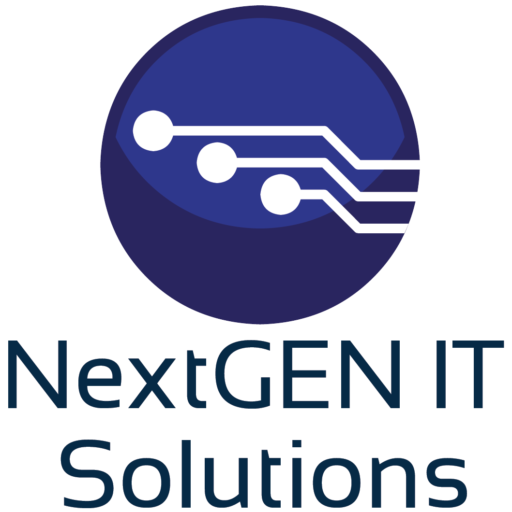Cybersecurity Risks in Remote Work Mitigation Strategies

Remote work has seen a significant surge in popularity in recent times, offering employees greater flexibility, convenience, and reduced office costs for employers. It has even been associated with increased productivity, as research indicates a 56% reduction in unproductive time when working remotely compared to being in the office. However, like any work arrangement, remote work is not without its challenges, and one of the most critical concerns is cybersecurity.
As remote work often involves accessing company systems, databases, and sensitive information from various devices and networks, it becomes more challenging to maintain the same level of device and network security as in a centralized office setting. Studies have shown that approximately 63% of businesses have experienced data breaches due to the actions of remote employees. However, this does not mean that remote work must come at the cost of security. By being aware of cybersecurity risks and taking proactive measures to address them, remote workers and employers can strike a balance between productivity and security.
In this article, we will explore some of the top cybersecurity risks associated with remote work and provide practical tips on how both employees and employers can effectively mitigate these risks.
1. Weak Passwords and Lack of Multi-Factor Authentication
Using weak passwords and reusing them across multiple accounts significantly increases the risk of a breach. Remote workers often access company resources from various devices, making it imperative to use strong and unique passwords for each account. Additionally, enabling multi-factor authentication (MFA) adds an extra layer of security by requiring a second form of verification, such as a code sent to a mobile device, along with the password.
Employers can play a crucial role in enhancing security by setting up access management systems that automate the authentication process. Moreover, deploying contextual MFA, which adapts the authentication requirements based on factors like location and device used, can further bolster security.
2. Unsecured Wi-Fi Networks
Remote work often involves connecting to different Wi-Fi networks, including public hotspots or home networks that may lack adequate security measures. These unsecured networks can expose sensitive data to hackers who may intercept data transmissions.
To protect company data, remote workers should utilize a Virtual Private Network (VPN) when connecting to public or unsecured Wi-Fi networks. A VPN encrypts internet traffic, ensuring that data remains secure even on untrusted networks.
3. Phishing Attacks
Phishing attacks continue to be a prevalent threat, and remote workers are particularly vulnerable due to their increased reliance on email and digital communication. Attackers may send deceptive emails or messages, tricking users into revealing login credentials or downloading malicious attachments.
To defend against phishing attacks, remote workers should exercise caution when opening emails, especially those from unknown sources. They should avoid clicking on suspicious links and verify the sender’s email address. Furthermore, remote employees should be educated on recognizing phishing attempts and encouraged to report any suspicious communications to the IT support team.
4. Insecure Home Network Devices
Many remote workers use Internet of Things (IoT) devices such as smart speakers, home security systems, and thermostats. These devices, if not properly secured, can introduce vulnerabilities to the home network and potentially compromise work-related data.
To address this risk, remote workers should change the default passwords on their IoT devices and keep them updated with the latest firmware. Creating a separate network for IoT devices, like a “guest” network, can isolate them from work devices and data, further enhancing security.
Employers can improve security for remote teams by implementing endpoint device managers like Microsoft Intune or similar solutions. These tools make it easier to manage security across multiple employee devices and ensure that necessary security measures are enforced.
5. Lack of Security Updates
Regularly updating devices and software is crucial for maintaining strong cybersecurity. However, remote workers may neglect these updates due to busy schedules or limited awareness of their importance. Cybercriminals often exploit vulnerabilities in outdated software to gain unauthorized access to systems.
To mitigate this risk, remote workers should enable automatic updates on their devices and software whenever possible. They should also make it a habit to regularly check for updates and install them promptly to ensure they have the latest security patches.
6. Data Backup and Recovery
Remote workers handle significant amounts of data, and the loss or corruption of this data can be devastating. Implementing a robust data backup and recovery plan is essential to protect against data loss and ensure business continuity.
Remote employees should back up their important files to a secure cloud storage service or an external hard drive. This measure ensures that even if a hacker compromises a device, the data remains safe and can be easily restored.
7. Insufficient Employee Training
Proper cybersecurity training is crucial for remote workers to understand security risks and best practices. Unfortunately, many companies neglect this aspect of cybersecurity, leaving employees unaware of potential threats they may encounter.
Organizations must provide comprehensive cybersecurity training to remote workers, covering topics such as identifying phishing emails, creating strong passwords, recognizing suspicious online behavior, and being aware of new forms of phishing, such as SMS-based “smishing.”
Remote work offers numerous benefits to both employees and employers, but it also introduces new cybersecurity challenges. By acknowledging and addressing these risks proactively, remote workers and organizations can create a secure work environment and enjoy the advantages of remote work without compromising sensitive data or business operations.
It is essential for remote workers to be vigilant about password security, utilize VPNs on unsecured networks, and stay informed about phishing threats. Employers can implement access management systems, endpoint device managers, and comprehensive cybersecurity training to fortify their remote teams’ security.
In conclusion, remote work can be both productive and secure when employees and employers work together to understand and mitigate the cybersecurity risks associated with this modern work arrangement. By doing so, individuals and businesses can confidently embrace remote work without compromising on data security and protection. If you need assistance in enhancing your remote team’s cybersecurity measures, don’t hesitate to reach out to experts for guidance and support. Stay safe and secure while enjoying the benefits of remote work!



